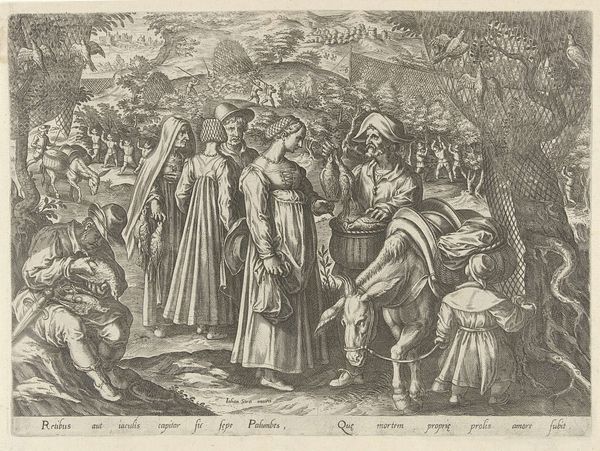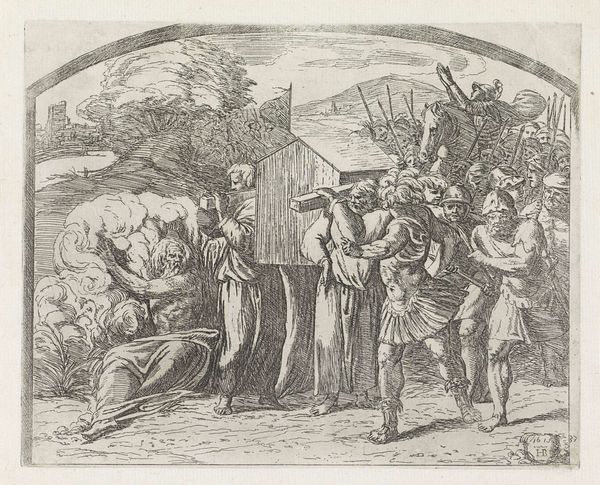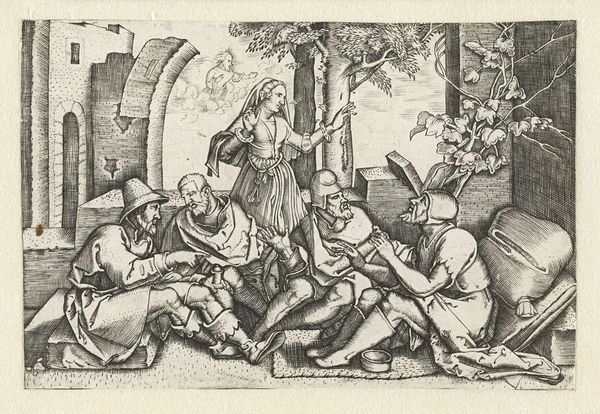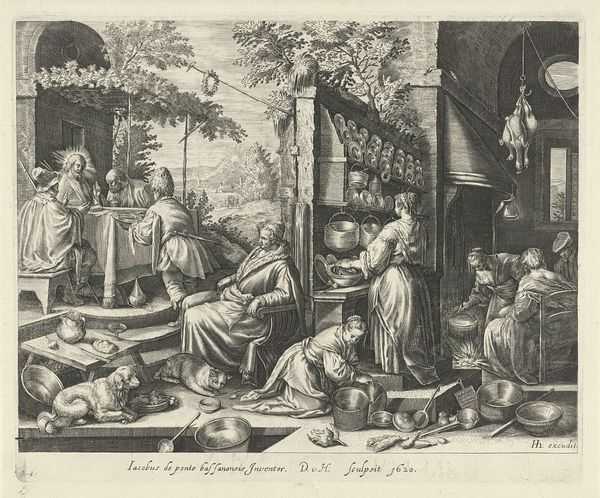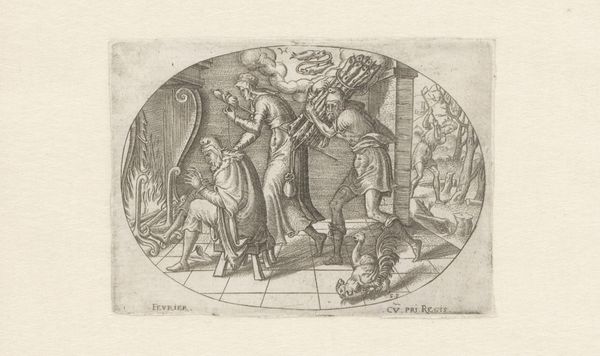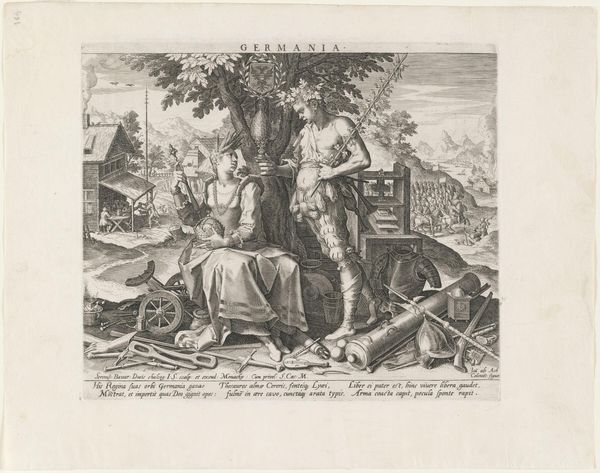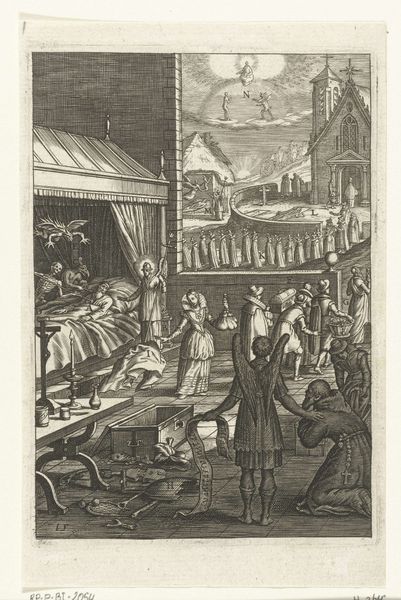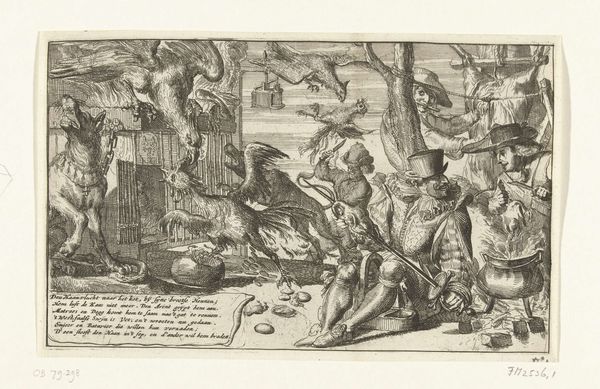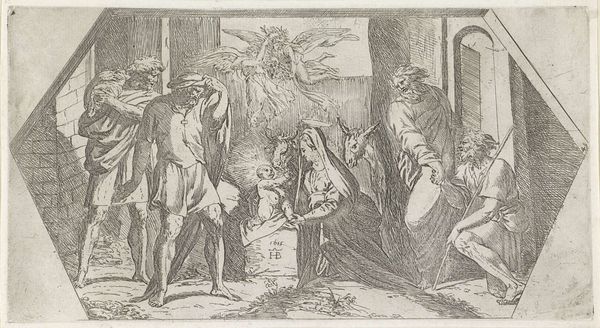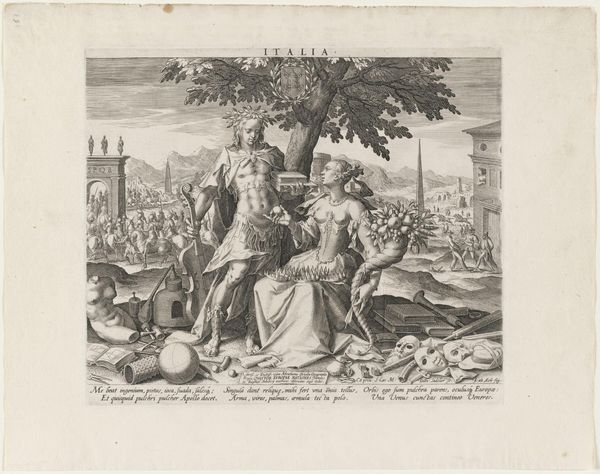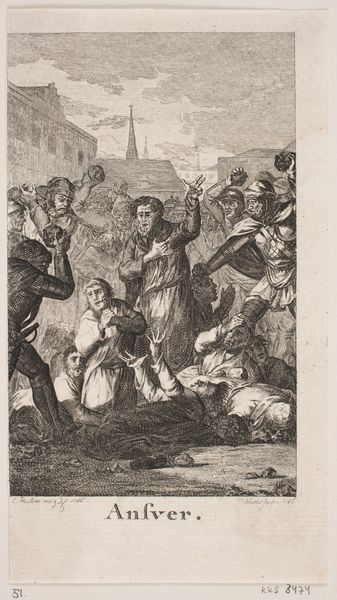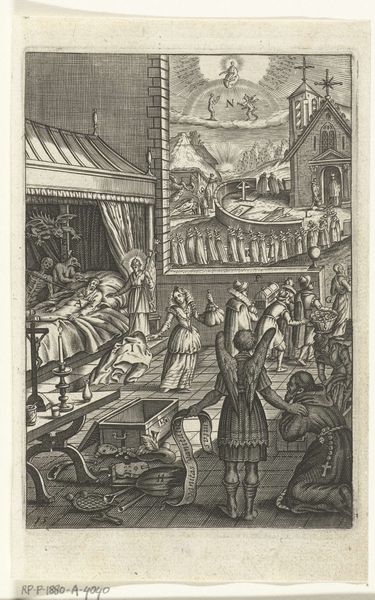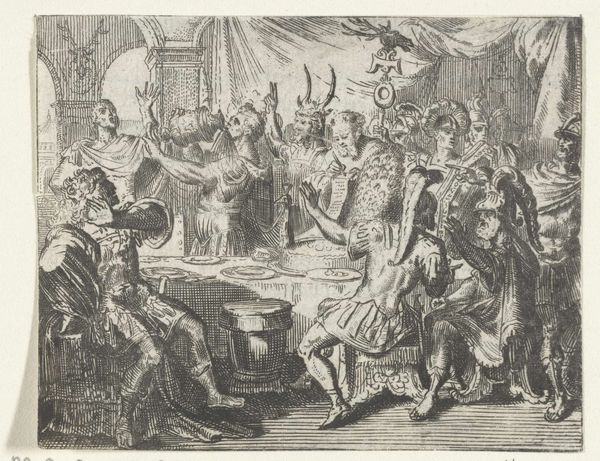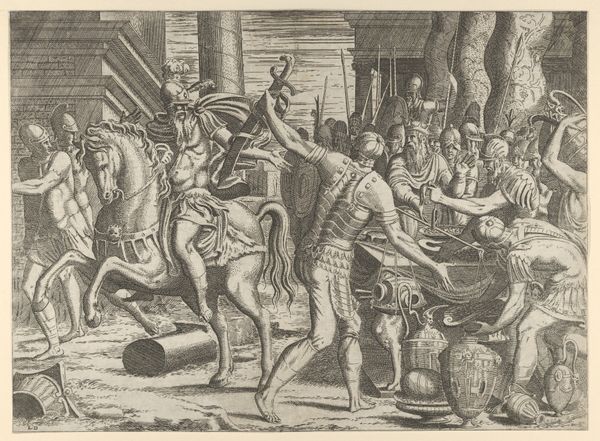
print, engraving
#
allegory
#
baroque
# print
#
old engraving style
#
landscape
#
figuration
#
engraving
Dimensions: height 180 mm, width 268 mm
Copyright: Rijks Museum: Open Domain
Curator: Here we have "Allegory of the Broad and Narrow Path," a print made by Gillis van Breen before 1645. It's currently held at the Rijksmuseum. Editor: My immediate reaction is... striking contrasts. Stark, almost. Light and dark, virtue and vice so clearly demarcated. There is no sense of harmony but of constant opposition in this piece. Curator: Yes, the baroque period often used strong contrasts for dramatic effect and clear messaging. This print stages a moral choice, popular during the time: the broad path of indulgence versus the narrow path of righteousness. Notice how each path visually embodies its theme through carefully constructed symbolism? Editor: Absolutely, it's a heavy-handed allegory, which, of course, suits the social function of art during the era. Look at the left side; it's a riot of earthly delights, overflowing with the "pleasures" the figures so ardently seek; but closer inspection reveals skulls and figures shrouded with despair—a warning of inevitable damnation! And opposite to that, you have figures struggling uphill along the narrow path, literally a pathway to redemption and salvation. I guess they knew the assignment! Curator: Precisely. Van Breen’s use of engraving enhances this duality. The crisp lines create a sense of precision that emphasizes the deliberate choices inherent in the allegory. Also the role of the institutions: you see the church is depicted here as offering true salvation, further reflecting its powerful socio-political standing and the role the art served in that context. Editor: But to what end, right? We can view art in this light, reflecting these cultural values but equally challenging that singular message, asking ourselves whose interests are truly served in promoting this singular vision of good and bad—binary ideas that do nothing but continue division. In today’s world, where binaries are continuously under scrutiny and re-defined, do we also revise this work and its function within a capitalist regime? It’s definitely an avenue for re-evaluating moral judgments today. Curator: An important question to ask, undoubtedly. I think what's useful is its ability to capture the spiritual anxieties and societal pressures of the 17th century, urging individuals to consider their earthly choices and the expected spiritual consequences—as influenced by those social power structures. Editor: Yes. Looking at this work now, it serves as a potent reminder of how moral frameworks, perpetuated through art and institutions, can be powerful tools of social and political control.
Comments
No comments
Be the first to comment and join the conversation on the ultimate creative platform.
